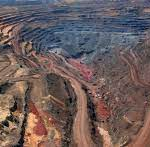 The EU is working on proposals to revive domestic production of a type of magnet specialised in electric car engines, offering support to local producers so they can compete with Chinese rivals.
The EU is working on proposals to revive domestic production of a type of magnet specialised in electric car engines, offering support to local producers so they can compete with Chinese rivals.
The moves to support production of rare-earth permanent magnets would mirror legislation introduced in the United States earlier this month to offer tax credits to manufacturers of the devices.
The US, EU and Britain aim to expand production of the super-strong magnets used in electric vehicles (EVs) and wind turbines to help meet carbon reduction targets and reduce dependence on China, whose manufacturers currently dominate the global sector.
European firms say they cannot compete with Chinese producers, who say they get subsidies worth about a fifth of their raw material costs, helping them supply 90 per cent of the global market for magnets.
“If we are going to invest our capital, we will need to see a coordinated effort where our share of capital will attract sufficient return,” reported Constantine Karayannopoulos, chief executive of Neo Performance Materials.
Neo owns the only commercial rare earth separation plant in Europe and is ready to build a $100m permanent magnet factory in Estonia, Karayannopoulos added. He said he had not seen the EU proposals, but supported a public/private effort to promote the sector.
The EU launched the European Raw Materials Alliance (ERMA) late last year to ensure the bloc has a range of critical minerals needed for its green transition and has given top priority to rare earths.
The bloc aims to create a domestic rare earth mining, processing and magnet industry to reduce vulnerability to any disruption in Chinese supplies.
China supplies 98% of EU demand for magnets made from rare earths, a collection of 17 minerals used in a range of applications including electronics, defence and aerospace.
European officials hope to repeat Europe’s success in building an EV battery industry, which saw a wave of investment after the EU offered funding and coordination.
The battery effort has seen 40 billion euros ($47 billion) of promised investment in 38 planned “gigafactories” over the past three years.
European attention is now shifting to the minerals used in permanent magnets, demand for which is set to increase up to tenfold by 2050, when the EU and Britain have pledged to cut net greenhouse gas emissions to zero.
Germany’s Vacuumschmelze (VAC), the only major producer of permanent magnets in the western hemisphere, is waiting to give the green light to plans to expand a factory to make magnets for Europe’s burgeoning EV industry until it is sure it has a viable business case.
“Chinese permanent magnet manufacturers get raw materials at 25% below the price I can get,” said Bernd Schleede, head of permanent magnets at VAC.
“To achieve a level playing field, either the EU would have to compensate for this gap, or it would have to consider sanctions on the import of magnets. Personally, I would prefer the first option.”
Chinese manufacturers take advantage of 13% VAT refunds on raw materials and typically get a 10% subsidy on raw materials from local governments.
.gif) Loading
Loading

